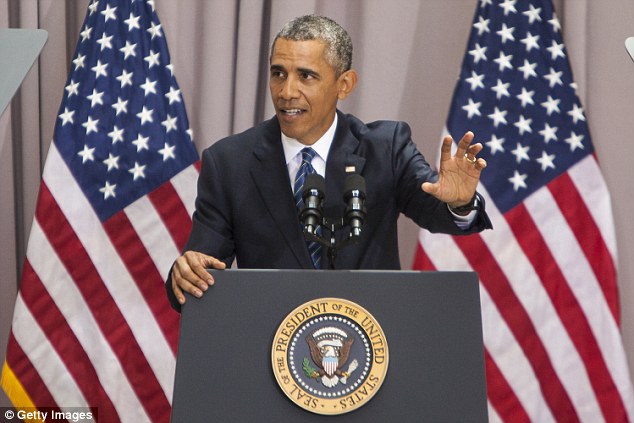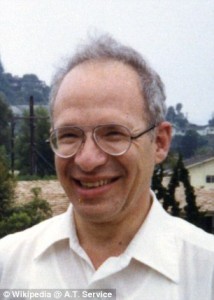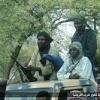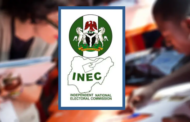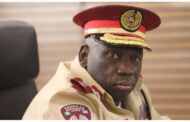The president’s Iran nuclear deal was praised by the scientists who include former White house advisers, Nobel laureates, and makers of nuclear arms
Their support will come as a welcome respite for the President who has faced stiff opposition from within his own party
Obama has been forced to try and reach undecided members of congress in a bid to push through the deal which has already divided opinion
But in the letter, all 29 scientists hailed the deal as ‘innovative’ and ‘stringent
Support: Obama’s plans have drawn the unprecedented support of 29 of the nation’s top scientists including Richard L. Garwin, above, a physicist who helped design the world’s first hydrogen bomb.
They have until September 20 to take a vote or the executive branch can move forward without them.
But in the letter signed by all 29 scientists, who rank as the most important experts in their fields, the deal was lauded as ‘innovative’ and ‘stringent’ The New York Times reports.
The letter opens saying: ‘As scientists and engineers with understanding of the physics and technology of nuclear power and of nuclear weapons, we congratulate you and your team on the successful completion of the negations in Vienna.’
It goes on: ‘This is an innovative agreement, with much more stringent constraints than any previously negotiated non-proliferation framework. It limits the enrichment of the uranium that Iran can produce, the amount of enriched uranium it can stockpile and the number and kinds of centrifuges it can develop a
It ends: ‘In conclusion, we congratulate you and your team on negotiating a technically sound, stringent and innovative deal that will provide the necessary assurance in the coming decade and more that Iran is not developing nuclear weapons, and provides a basis for further initiatives to raise the barriers to nuclear proliferation in the Middle East and around the globe.’
Richard L. Garwin, a pre-eminent physicist who helped design the world’s first hydrogen bomb and has long advised Washington on nuclear weapons and arms control was the first to sign the letter.
Garwin is considered to be one of the most influential physicists still alive connected to the implementation of the nuclear age.
The much-talked about deal calls for Iran to curb its nuclear program and allow inspections in return for an end to international oil and financial sanctions.
It has been met with criticism from Republican and Democratic members of congress ahead of its passage through congress.
Israel’s Prime Minister Benjamin Netanyahu expressed his opposition to the deal and joined Republicans in the U.S. Congress claiming it will lead to the destabilization of the Middle East.
Yet Obama fought back earlier this week saying that Netanyahu is ‘wrong’ while reinforcing his commitment to the protection of his ‘dear friend and ally.’
Other noted scientists who have voiced their support include Freeman Dyson of Princeton, Sidney Drell of Stanford and Rush D. Holt, a physicist and former member of Congress.
Additionally, Siegfried S. Hecker gave his backing.
Hecker, a Stanford professor, directed the Los Alamos weapons laboratory in New Mexico, from 1986 to 1997, a facility which produced designs for most of the arms now in the nation’s nuclear arsenal.
The letter applauded the proposed Iran deal and shoots down the idea that Iran may be able to create nuclear weapons in secret.
It rebuffed criticism of the deal suggesting the fine print has many safety nets which solves ‘concerns about clandestine activities.’
It branded the 24-day cap on Iranian delays to site investigations as ‘unprecedented.’
And said it was a step in the right direction to ban research on nuclear weapons ‘rather than only their manufacture,’ as established in the 1968 Non-Proliferation Treaty, the top arms-control agreement of the nuclear age, The New York Times wrote.
The 29 scientists who signed the letter are among the most renowned physicists in the world.
They are considered to be among an elite set of people who have been given ‘Q clearances’ according to the government which grants them access to a special category of secret information that bears on the design of nuclear arms.
In an assessment of Tehran’s nuclear capability, the letter warned that Iran, before curbing its nuclear program was only a few weeks away from having fuel for nuclear weapons.
The letter was thought-up by Dr. Garwin and Dr. Holt in a bid to provide support for the deal by those who understand the complex nature of nuclear arms.
THE 29 SCIENTISTS THAT BANDED TOGETHER TO SIGN LETTER FOR OBAMA
Richard L. Garwin, IBM Fellow Emeritus
Robert J. Goldston, Princeton University
R. Scott Kemp, Massachusetts Institute of Technology
Rush Holt, American Association for the Advancement of Science
Frank von Hippel, Princeton University
John F. Ahearne, Director, Ethics Program at Sigma Xi, The Scientific Research Society
Philip W. Anderson, Professor Emeritus, Princeton University
Christopher Chyba, Princeton University
Leon N. Cooper, Brown University
Pierce S. Corden, Former Director, Office of International Security Negotiations, Bureau of Arms, Control: Department of State
John M. Cornwall, Professor of Physics and Astronomy, UCLA
Sidney D. Drell, Stanford University
Freeman Dyson, Professor Emeritus, Institute for Advanced Study, Princeton University
Harold A. Feiveson, Princeton University
Michael E. Fisher, Professor Emeritus, Cornell University and University of Maryland
Howard Georgi, Harvard University
Sheldon L. Glashow, Boston University
Lisbeth Gronlund, Union of Concerned Scientists
David Gross, Professor of Theoretical Physics, Kavli Institute for Theoretical Physics, UCSB4
Sigfried S. Hecker, Center for International Security and Cooperation, Stanford University
Martin E. Hellman, Professor Emeritus of Electrical Engineering, Stanford University
Ernest Henley, University of Washington
Gregory Loew, Emeritus Deputy Director and Professor, SLAC National Accelerator Laboratory
C. Kumar N. Patel, Professor Emeritus of Experimental Condensed Matter, UCLA
Burton Richter, Stanford University
Myriam Sarachik, City College of New York, CUNY
Roy F. Schwitters, The University of Texas at Austin
Frank Wilczek, Massachusetts Institute of Technology
David Wright, Union of Concerned Scientists
Source: NY Times



